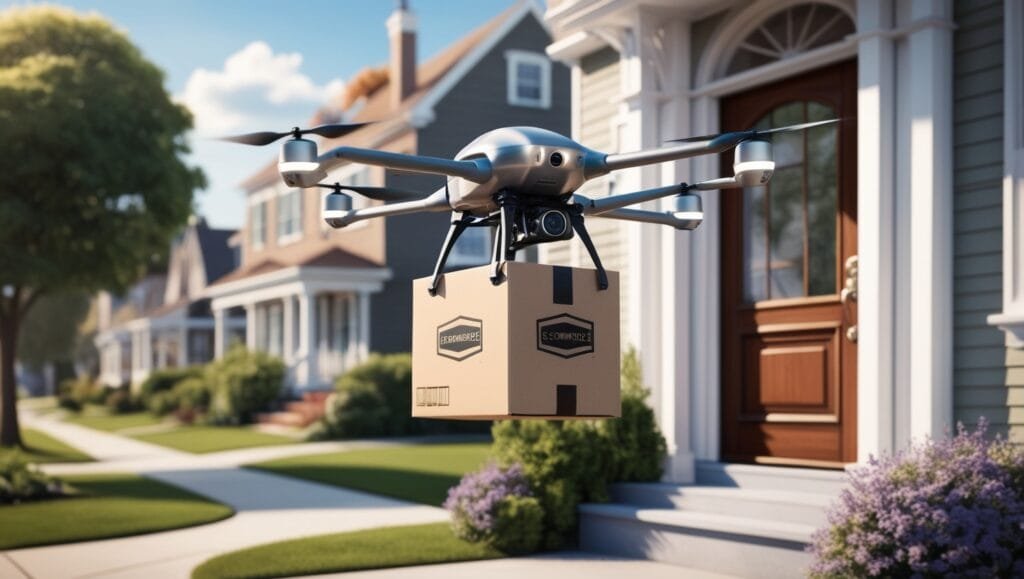Drone delivery, once a futuristic concept, is rapidly becoming a reality. With advancements in technology and supportive regulations, drones are poised to revolutionize the logistics industry, offering faster, more efficient, and environmentally friendly delivery solutions.
The Potential of Drone Delivery

- E-commerce: Drone delivery can significantly reduce delivery times, especially for last-mile deliveries. Imagine receiving your online order within minutes, not days.
- Medical Supplies: Drones can transport critical medical supplies, such as blood samples, medications, and organs, to remote areas or during emergencies.
- Disaster Relief: Drones can deliver essential supplies to disaster-stricken areas, bypassing road infrastructure damage.
Challenges and Considerations
While the potential of drone delivery is immense, several challenges need to be addressed:
- Regulatory Framework: Developing clear and comprehensive regulations to ensure safe and efficient drone operations.
- Technological Limitations: Ensuring reliable and accurate navigation, especially in adverse weather conditions.
- Public Perception: Addressing public concerns about noise pollution, privacy, and safety.
Real-World Applications
Several companies and organizations are already testing and implementing drone delivery solutions:
- Amazon Prime Air: Amazon has been actively working on drone delivery, aiming to deliver packages within 30 minutes.
- Wing: Alphabet’s drone delivery service has successfully delivered packages to customers in select areas.
- Zipline: This company uses drones to deliver medical supplies to remote areas in Africa.
Environmental Impact
Drone delivery has the potential to reduce carbon emissions and traffic congestion. Drones can contribute to a more sustainable future by replacing traditional delivery methods.
As technology continues to advance, we can expect to see even more innovative and efficient drone delivery solutions. The future of logistics is taking flight.